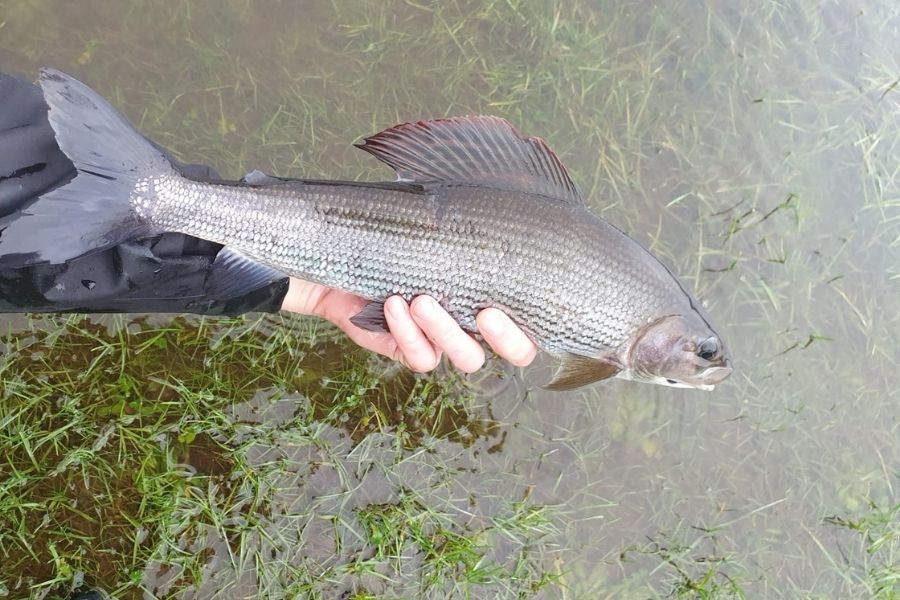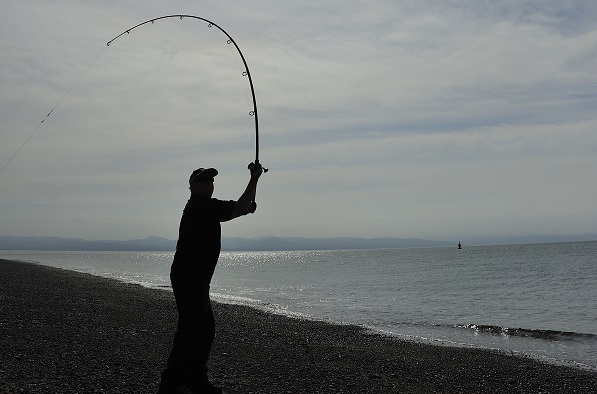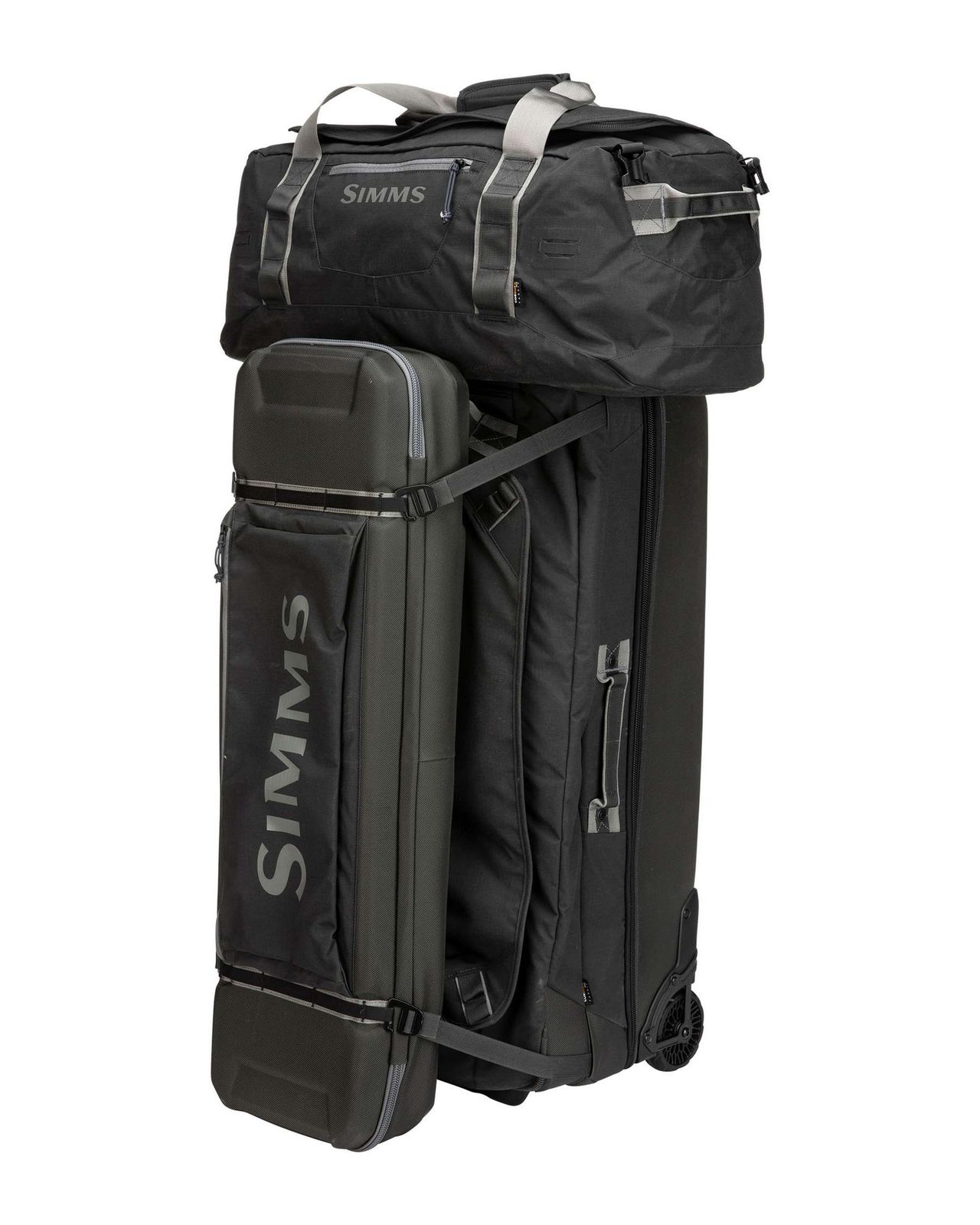Euro nymphing is a technique that was adopted by fly anglers from Czech Republic, Slovakia, France and Poland. Unlike traditional fly casting, this very intimate technique is designed to use the weight of a weighted nymph to propel your fly to a designated target on the river and then fish your flies along the bottom.
In this article, we will be breaking down the tackle required to get you started on this very effective and deadly fishing method.
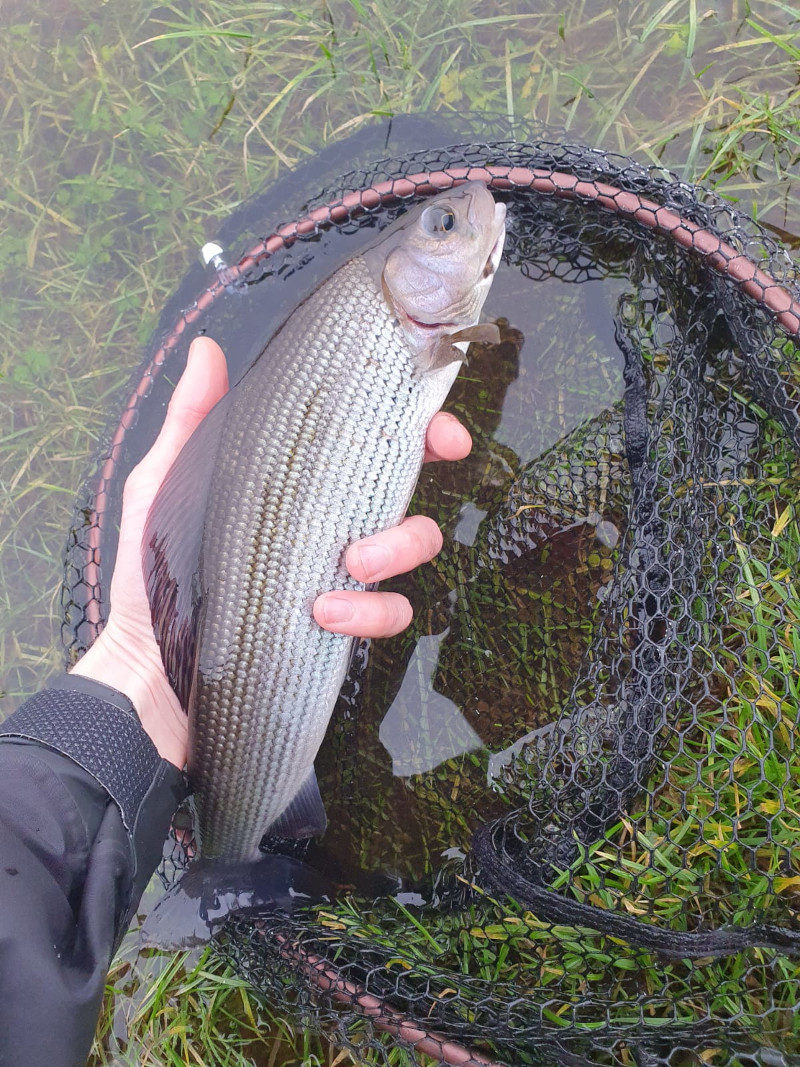
Euro Nymphing Tackle
As we previously mentioned, Euro Nymphing has a slightly different setup to your traditional fly fishing setup. Below, we break down the tackle required and show you how to set up this effective nymphing method.
Euro Nymphing Rods
When it comes to rod selection, you can use fly rods from 9’6” to 11’ with a line rating from #2 – #4. However, the most popular rod choice is usually a 10’ rod in either a #3 or #4.
Pro tip: Opt for a longer rod of 10’ plus. The longer rods provide better distance when casting the flies. They provide a softer action which is beneficial when playing soft mouthed grayling and will reduce hook pulls. The longer rods are more forgiving and provide better presentation for light breaking strain french leaders.
Try and stay away from shorter rods as they will greatly reduce your casting distance and they will also reduce the length of the drift. This means you will be covering water as effectively or efficiently as possible.
Fly Reels
Opt for a larger fly reel, something with the #5/6 line rating, this sounds bigger than necessary but the larger fly reels will help balance those longer 10’ rods that are required to fish this technique.

Pro tip: Although not essential, cage style fly reels are advantageous as they stop thin diameter lines/leaders fouling on the spool.
Euro Nymphing Lines
In some styles of euro nymphing there is no need for any “fly line” at all. Something like a french leader (Hends camou french leader) or the RIO Euro Shorty can be attached directly to the backing line or even to the front of a weight forward line you already have fitted to the reel – if you have sufficient space.
Although the latter sounds like a slightly clunky way to set up, the vast majority of the time you will be fishing the margins, so your fly line will be housed on the fly reel most of the time.
There are specific nymphing lines that you can purchase for this style of fishing and most of these will meet FIPS-Mouche competition rules. Lines such as the Airflo ESN or the RIO FIPS Euro Line are good options to consider.
Indicators
There are numerous options for indicators for euro nymphing; these vary from highly sensitive 2 tone indicator tippets such as the RIO or you can opt for a slightly bigger more visible option such as the Sybai Nymph Strike Indicator.
Leader material
When it comes to leader material, fluorocarbon is the preferred option due to its higher density, low refractive light index and superior sink rate compared to other lines such as monofilament and copolymer tippets. Opt for thin diameter leader material, this will cut through the water column a lot more effectively.
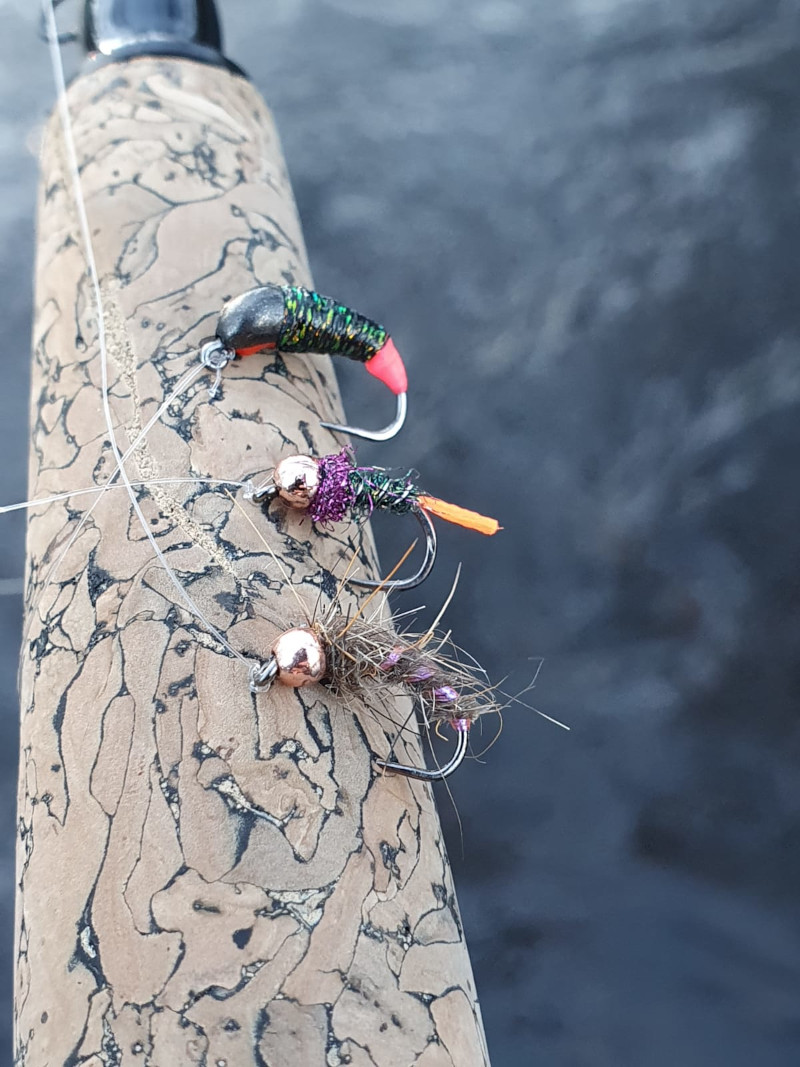
Leader setup
The leader setup is one of the key components for fishing this style effectively. Let’s break down the elements required and how they piece together.
Tapered Leader
The tapered leader is attached to your main fly line via a loop to loop connection. Usually around 14ft in length this leader will feature a loop at one end and a visual indicator with a leader ring attached at the other end.
These leaders can be made to custom lengths of your choice or if more convenient, pre-made ones are readily available, such as the RIO Euro Nymph leader that incorporates a length of hi-vis 2-tone indicator onto a pre-looped tapered leader that can be added directly onto the end of your euro fly line.
If you have a French style tapered leader the taper is already in the French leader therefore an indicator can be added directly onto the end of this using a knot such as a back to back grinner.
Pro Tip – UV Knot sense on the connection between your euro nymph line and leader for a more seamless and smoother connection that will run through the smaller guides of your nymphing rod.

Tippet
From the leader ring on the end of your leader where your indicator is located, you want to attach a length of tippet roughly around 5-6ft in length and 5lb breaking strain. (This can be longer or shorter depending on the typical depth of water you are likely to encounter but 5-6ft is a good starting point.)
Your first dropper will be attached to the leader ring that is located at the end of the leader. We will then have a further tippet length of about 50cm and then we will have another leader ring tied in and then a further 50cm length will be tied to the second leader ring.
So we have something that looks like this.
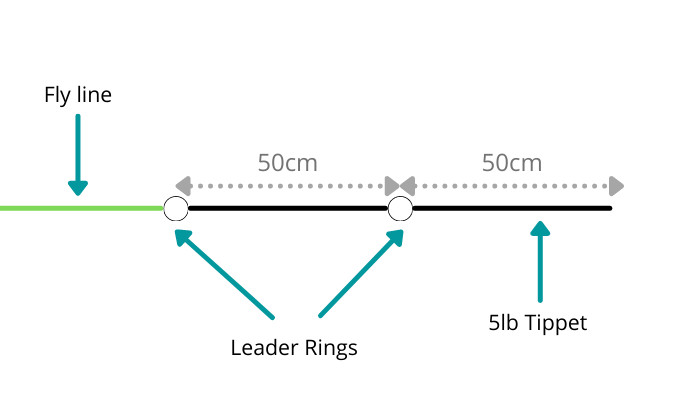
We find that fly weight plays a more important role than the fly pattern itself. When fishing this style you should be able to feel your flies “ticking bottom”. This is when your point fly can be felt bouncing along the bottom and this gives you a good indication that you’re fishing at the correct depth.
If you don’t feel your point fly making contact with the bottom, try a heavier fly on the point until you can feel the fly making contact with the bottom. Bear in mind, that variables such as flow and water levels are worth taking into consideration when choosing the correctly weighted fly.
If your flies are constantly getting hung up by snagging the bottom or not moving at all, a lighter point fly is probably required.
Pro tip: A 3mm tungsten beaded point fly is a good starting point and from here you can see how it fishes.
Leader Rings
Leader rings or tippet rings are used when constructing a suitable leader for euro nymphing. These very small stainless steel rings offer very neat and quick change options to your setup. These leader rings are great for attaching your fluorocarbon leader onto your indicator of choice.
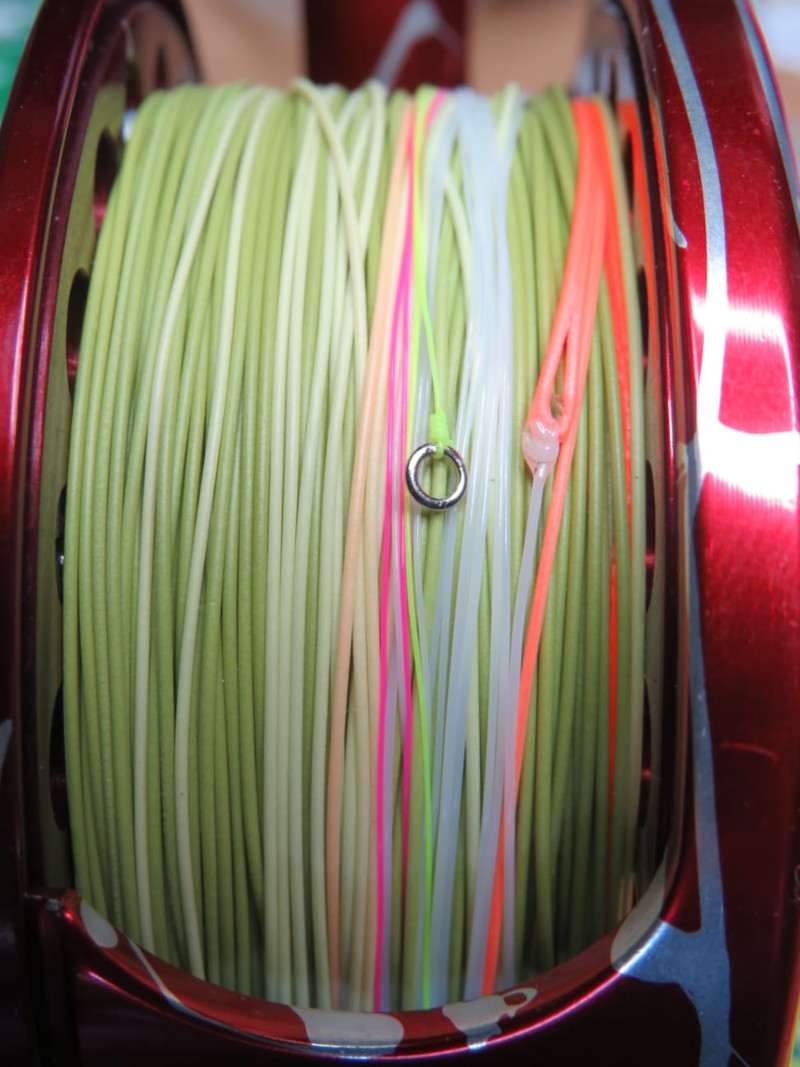
They can also be used for adding lighter breaking strains of leader as a dropper off of your mainline when constructing your leader or cast of flies. This offers a weaker link in your cast that will be easier to break off if you encounter a snag. This will also help avoid the issue of having to re-construct a completely new cast too. We recommend using a 4lb line for the main body of your leader and then adding in a 3lb length as your droppers.
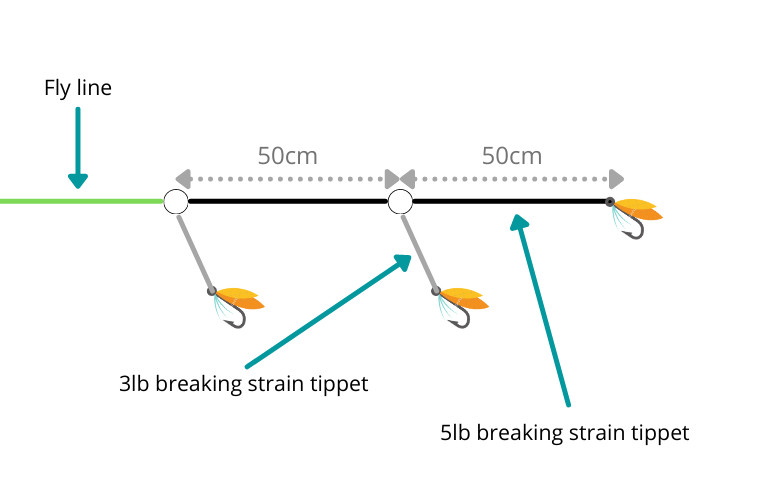
Grayling Flies
Grayling flies can vary in size from an 8 to size 18 however most commonly used are those from a size 12 to 16. Flies can vary a lot but most grayling flies will have the addition of a hotspot in them somewhere. This can be in the form of a bead, a dubbed collar or even a brightly coloured “tag”. (Check out our best grayling flies article here)
A jig style point fly is preferred as this style is less likely to become snagged on the bottom due to hook point facing upwards. Curved or straight style hooks are preferred for on the droppers.
As we previously touched upon earlier, having a few patterns with various sized tungsten beads will be beneficial when targeting grayling. The varying tungsten bead densities will allow you to fish in various fishing conditions and depths.
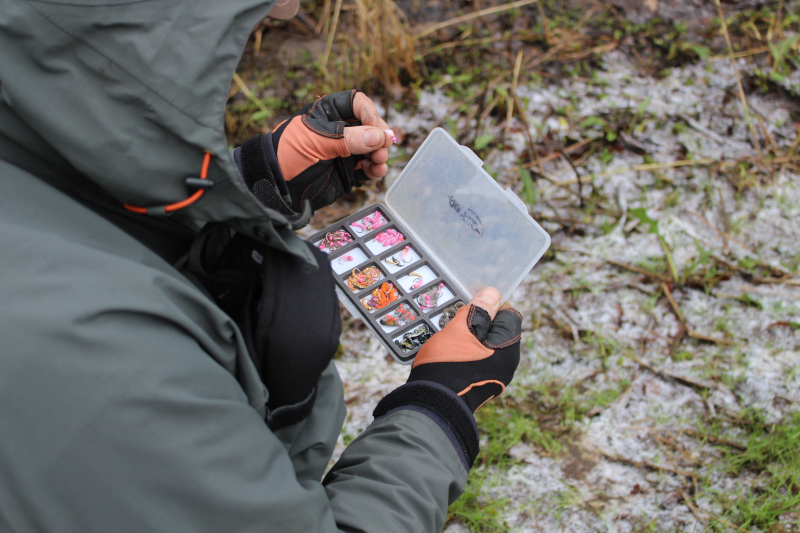
Summary
Hopefully, after reading this article you will have a better understanding of the components and tackle required for this intimate and exciting method of nymph fishing. A very simple tactic that has accounted for many a good fish. Why not give it a try!


